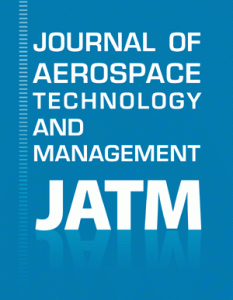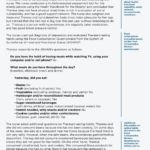By Rosa Moraes, Scientific Journalist, Linceu Editorial, São José dos Campos, SP, Brazil
The article “Wind tunnel investigation of the wind patterns in the launching pad area of the Brazilian Alcantara Launch Center”, published in Volume 11 of the Journal of Aerospace Technology and Management, continues the studies developed by the Brazilian Space Program on wind flow patterns that affect the Alcantara Launch Center (ALC) region, emphasizing its analysis in the particularly critical area of launch operations, the Launch Pad Area (LPA).
The study was designed for better understanding of the wind flow patterns, especially around Mobile Integration Tower — MIT — in order to identify regions of strong vorticity that can cause vibrations and overloads in its 33 meter high steel structure. In the experiment, a Launch Pad Area model, coated in black paint to minimize any laser reflections that could interfere with the results collection, was placed into a wind tunnel.
The research was conducted in 2016, in the TA-2 aeronautic subsonic wind tunnel, located on the premises of the Instituto de Aeronáutica e Espaço (IAE), Brazil. To simulate the typical atmospheric boundary layer of the Alcântara Launch Center, procedures were described in the study that detail the equations, methods and reference works used, as well as the results illustrated in graphs, tables and figures.
Figure 1. LPA Model.
A hot wire anemometer system was used to measure turbulence and wind flow analysis was performed using the particle image velocimetry (PIV) technique, an optical method that allows the visualization and analysis of particle motion in streams. The slope was simulated by supporting the model on a platform and the natural irregularities of the terrain were recreated by placing wooden blocks and spires at the entrance of the wind stream. Several angles of wind incidence were tested with the model in vertical and horizontal position.
The results presented are issues of great interest in terms of safety and effectiveness of launches, since their proper planning and success depends directly on wind flows and their angle of incidence, speed and strength. In the case of sounding rockets and satellite launch vehicle, for effective launch operation, understanding of environmental conditions is fundamental (VAUGHN; JOHNSON, 2011).
Being located on a coastal cliff 40 meters above sea level and by the ocean, the Alcantara Launch Center is subject to peculiar topographic and weather conditions. Such characteristics may even influence the atmospheric boundary layer and compromise the safety of launches. Issues such as rocket trajectory and propellant gas dispersion were also considered in this study.
The Alcântara base is one of the best strategically positioned in the world, being in Atlantic coast area, with stable climate throughout the year allows a reliable launch schedule to be set up. In addition, its privileged location, very close to Ecuador, is shared only with the Guiana Space Center.
References
VAUGHAN, W.W. and JOHNSON, D.L. Aerospace meteorology: some lessons learned from the development and application of NASA terrestrial environment design criteria. BAMS [online]. 2011, vol. 92, no. 9, pp. 1149-1157, 2011. DOI: 10.1175/2011BAMS3133.1. Available from: https://journals.ametsoc.org/doi/abs/10.1175/2011BAMS3133.1
To read the article, access it
FARIA, A.F., AVELAR, A.C. and FISCH, G. Wind tunnel investigation of the wind patterns in the launching pad area of the Brazilian Alcântara Launch Center. J. Aerosp. Technol. Manag. [online]. 2019, vol. 11, e0719 [viewed 27 August 2019]. DOI: 10.5028/jatm.v11.996. Available from: http://ref.scielo.org/p8mf5j
External link
Journal of Aerospace Technology and Management – JATM: <http://www.scielo.br/jatm>
Como citar este post [ISO 690/2010]:



















Recent Comments